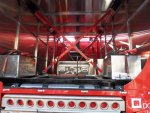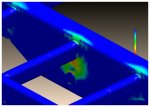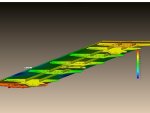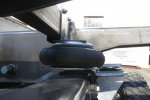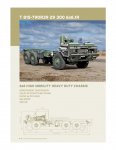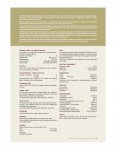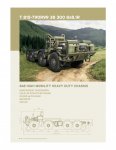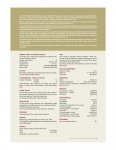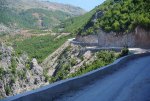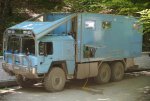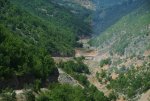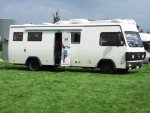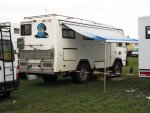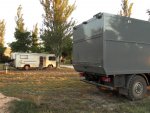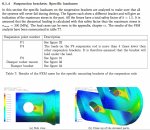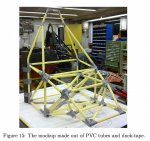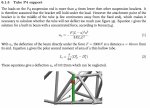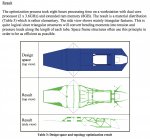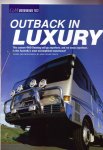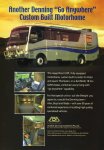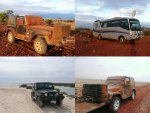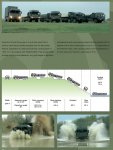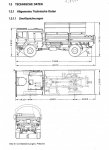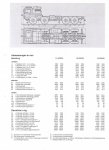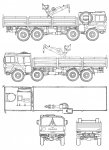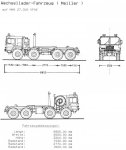Hey Bio,
....stole another pack of time! Below the edited/reshuffled quote with quote of Campo's post - I'll just rant a bit into that!
Quote Originally Posted by biotec View Post
So the concept vehicle being discussed here will be:
a fully integrated, German "Liner" style motorhome
with 3 axles, and 6x6 all-wheel drive
ideally below 16 tons, fully loaded; but torsion-free chassis is an absolute minimum requirement
constructed either on MAN SX-44 or Tatra 815 "Phoenix" torsion-free chassis
intended for a 2017/2018 release date
OUCH! Unless you build the REST of the Terraliner out of Unobtainium (probably not invented by 2018!) you can forget about the 16 tons!
Btw: 16 tons is 4x4 territory - IF you insist on 6x6, might as well design for max usage of the 3 axles ~26-28 tons for a "motorhome"
You already stated, that your design will NOT be OFF-ROAD, but ALL-ROAD capable, well, WHY then do you insist on MAN/KAT/TATRA chassis as a basis?
These machines are decidedly "military go ANYWHERE with a support team behind"!
Ask any of the gentlemen/ladies here that actually have machines based on the named chassis, if they really ever got themselves into places, where they needed the actual capabilities of their rigs? I bet, mostly not and the ones that did, would do everything to avoid doing it again!
As previously mentioned - one does not want to risk the only home/safe-place you have along!
Even guys like ENG, who takes/took his KAT up the river to get to a camping place, will do that now and very then - a river that wide and drive-able is that wide for a reason - FLOODS. You don't want to get stuck upriver! Then his tires took a beating - what if you blow one in the middle of it?
Another point to ask the guys with real experience is how much their 6x6 drives are really in use??
Most travel km will NOT need anything more than a lockable or LS rear drive - for all these km you will carry probably close to or over a TON of heavy metal around as ....ballast at best or fuel eater at worst (depending if you can freewheel)!
Also already posted - google up on MAN-hydro drive, RENAULT-optidrive, POCLAIN hydro-drive [the inventor and patent holder of this], MERCEDES is catching up too and VOLVO has something coming too [being the de-facto step-mother of Renault these days....] for every driven conventional axle replaced by non-driven axle with hydro-drive hubs you save roughly 400kg - maybe not for EVERY axle, I don't know if this number already includes the transfercase/drive.
You still can use the AWD-drive without a time limit, but when it is off you save weight/energy.
"Don't wrong get me - Love I do the MAN/KAT/TATRA builds, but for MAINLY road use destined they are not!"YODA"
Military HAS to expect that a countries main-roads will be the 1st thing taken out by the enemy - that's why they must have these chassis - economy is not even the 2nd consideration.....
front and rear wheel steering
engineering innovative, not engineering futuristic
Unless you grow legs on your ride, you will be hard pressed for "futuristic" these days!
...and even that wouldn't be too far off:
https://www.google.com/search?q=all...m=isch&q=plustech+all+terrain+walking+machine
designed with a view to "technology available now", but also "technology not yet proven" in an expedition motorhome application
intended for a well-off, recently retired couple, and used for full-time overlanding around the world
but with convertible seating and a pull-down bed, so that it could sleep 4 adults on a temporary basis
9.5 m long, 2.5 m wide, 3.95 m high
equipped with a motorcycle, stowed along with spare tires, in a "column" type hydraulic tail-lift at the back of the vehicle
and a small SUV runabout towed behind the vehicle, as per Petert Thompson's Mañana
If you are doing the 3.95m hight you might as well go to the mostly applied max length of 12m - as mentioned elsewhere, 3.95m hight will be the limiting factor much more often than the length. If you already specify - "additional modes of transport" - might as well make these go-anywhere and "moderate the home base".
equipped with an off-road capable, military grade, serial-hybrid power train
...see above
full serial hybrid, and not parallel hybrid
with either a diesel engine, or a microturbine, driving a range-extending electrical generator; still to be determined
possibly equipped with two generators, for redundancy
multi-fuel capable
At present battery technology - you will have to make some hard decisions about powering your Terraliner - the more power you want the bigger the battery bank, the heavier, the more power, the more battery, the heavier, .......you get the idea!
AS mentioned before - bat tech leaps everyday - by 2018 I think we will have the first cars with the same range of gasoline/diesel cars - probably charging times and charging station infrastructure will not be there to make it really an alternative yet....
Please observe, I wrote CARS not TRUCKS.....
For the proposed remote travel capacity I suggest you concentrate on DIESEL powered electricity production.
DIESEL WILL stay the main transport energy provider for MANY years to come - however SERIAL hybrid tech will arrive shortly, at least for on-highway longhaul. As the generator efficiency constantly gets better, the drive possibilities of e-drive will become an advantage over transmissions. Though I believe for AWD capability the Hydrodrive will still rule, .....unless they can make e-motors as light as hydro-motors!!
HYBRID will effectively only be useful for energy recovery, from downhill braking and normal braking [The hydro hub motors can be used to drive a hydro-generator to recover as well if the road surface requires....]
If you go for the Serial Hybrid System anyway - you probably don't need two generators - how many trucks (or even Specialty builds out there) have a 2nd ENGINE?? You design (effectively) a Diesel-Electric-System (In Locomotives and certain Ships, this is old news!!) - you call it Serial-Hybrid, just because it is an extension of the previous hybrid CAR systems - it's a little bit like turbines vs. diesel generators - just takes time to make SMALLER systems as efficient as the big ones!! (Btw - the biggest TransOceanCruiser - the Queen Mary 2 runs Turbine-Electric-Generators of 25000kw each, BUT also 4 DIESEL-Electric-Generators of 16000KW each - ALL to ELECTRIC-Drive-Pod-Systems, Turbine-Generator sets sit on the upper deck!!
Also Aux-DIESEL-Generators are still used....
Sooo - it seems the switch over point for EFFICIENCY advantages between DIESEL-piston engine and Turbine power is somewhere above 16000KW (...at least at the time the QM2 design was frozen - probably around 2000?). Most likely the threshold came down quite a bit by now, but I doubt it already reached the power-levels you will look for in the Terraliner.
The only justification you might get is, that a turbine-gen-set is significantly lighter than a diesel-engine. However looking at e.g. the weights of VW-TDI powered Gen-sets at the power levels you need vs. turbine powered will probably not outweigh the cost difference....
You will have to balance the battery size, between storage capacity for at least 18 hrs to operate the camped vehicle and charging technology so that you can take advantage of the most efficient output range of the diesel generator. Optimize for MAX DIESEL storage capacity (no matter if you use a diesel engine or turbine, a ROAD-destined turbine will hardly ever be Jet-fuel powered....).
Another one is if you can keep the batteries charged by solar-power only....
Multifuel-capability? FORGET IT! I don't know of ANY Multifuel-motor out there that keeps its efficiency compared to any dedicated-fuel engine.
Whatever you think you might gain by being able to buy cheaper alternate fuels you WILL loose on efficiency, complexity and reliability elsewhere!
top speed 140 km/h
normal driving speed 100 km/h
tires to be determined, depending on application; tire size either 14.00 R20 or 16.00 R20
equipped with CTIS, tire-protection shields, and possibly tire-protection chains (as recommended by egn)
Bio! If you are out travelling - you will HARDLY EVER want to go 140 - especially with a BIG RIG! I did 130km/h once with a 18m tractor trailer in old East Germany (don't tell anyone!) with brand-new Scania 143 - 400hp - just short of red line rpm - fantastic, I think this was 1989!! But this was a HIGHWAY-rig!!
I wonder what the average Touring/Travel speed of the Big-Rig-Owners here is?
I suppose if you plan for a max of 120 it will be hardly ever used - going electric of course has a lot of flexibility here.
Using the above mentioned Tires - I doubt these will like your speed proposal either!
Look up what a common tire/wheel-size is for the purpose - considering you WANT some serious ground clearance - probably some R22.5 - I assume....
Considering, that you already specify "additional mobility" - I suggest to stick to common and efficient tires, like High-Grip Road tires (Gravel pit trucks, etc...) though I would go for the tallest ones available.
Save the Michelin-Super-X for the trailered "additional mobility"!
equipped with a very large battery pack; either lithium-ion or ultra-capacitors, still to be determined
see above - you are not going VERY far yet on battery alone, nor would you efficiently charge them with your available solar power - better concentrate on energy recovery capacity from downhill coasting and braking and save fuel this way.
capable of traveling comfortably through a -50°C to +50°C climate range
and a 5500 m altitude range
covered in lots of very big, thermally advanced windows
constructed out of walls 6 m thick; roof and floor thickness still to be determined
You want to re-think those very big windows - see previous post!
.....and those 6m thick walls!! You probably meant 6 cm???
maximize solar panels coverage with fold-out panels when stopped, use them as shade/awning while at it!!
possibly equipped with slide-out for lounge area
and a full-length UniCat type pop-up
Pop-up will probably not help with the weight - but I do agree this is a great idea to make it roomy for longer stays.
But then get on it and do slide-outs too - properly designed they ARE reliable and not that heavy.
no garage in back.
equipped with a fold-down deck at the rear of the vehicle instead
a fold-down rear deck accessed by sliding glass doors, that run across the full width of the back of the vehicle
a fold-down rear deck that lowers with a "cantilever" type hydraulic tail-lift mechism
I think you need to add about 10 tons to your weight desires!!
not air-transportable; a vehicle for sojourning, not racking up overlanding miles
What I say - forget the 140km/h!!!
Mate!! NO worries - if you really want - I have the connections to get you air-transport for anything you can fit on a road (2.5 m wide and less than a 100 tons total)!! If you want to get brought in on the spot you can go bigger but need to stay below 20 tons.
Question is if you have the dough to pay the service and will survive seeing the invoice! :Wow1:
designed with lots of curves, in a "Retro-futuristic" style reminiscent of the 1930's and 1940's
designed so that it looks visually endearing, non-threatening, and lovable, as per the VW "Kombi" Microbus
but also designed with beauty, grace, and elegance in mind
Well "Mr. Colani #2" - I am afraid you will have to do a LOT off soul-searching - if you REALLY want to design something according to the discussed list - not exactly highly compatible wishes here!
The old VW bus might have been quite a ride and I had the pleasure to go places with one myself (not mine, but I drove it!), not exactly scale-able though.
Now take the newer Synchros - scale them up and you got - a very straight 'n square box again!!
So campo, many thanks for your message!! It had a good structure, and encouraged me to think in a very systematic, point-form way about some of the more important specifications of this concept vehicle.
Yeah - now let me hack through Campo's answers/ideas below!!:sombrero:
All best wishes,
Biotect
Hi there
Thank you for the many clarifying details on your thoughts.
Of course we have some more questions and sometimes also our own ideas...
.
From all your mentioned points I have one big problem with your basic idea.
The use of the old fashioned conventional truck base as a 6x6 SX44/45 or HX or Tatra 815
is not at all what I would call "a fully integrated" solution as you would like to see one for your innovating concept expedition RV.
.
These MAN and TATRA's 6x6 are built as easy selling platforms on which you can put as well a concrete mixer, a missile launcher as some sort of RV container.
Man and Tatra accept, if you wish to do so, that you take of the driving cab and put an "integrated" coach or RV bodywork on their platform framework.
.
Not very useful as a base for an "fully integrated" concept expedition RV.
The MAN/TATRA engine and driveline choice and position is only like that because it has been sold like this for many years.
The chassis forms are shaped like it is because you can build any kind of body on it.
The driver cabin is in the front, just taken out of the normal truck production.
So nothing new or innovative if you take this base idea.
.
I would imagine more a monocoque structure as an innovative base for your concept.
Look at cars/vans or on more heavy vehicles like the modern coach frames that are slowly becoming integrated vehicles.
On the best new coach examples you will have difficulties to find the old truck chassis structures.
You can also look at the Steyr Pandur 6x6 or Mowag Pirhana 6x6 who do not have chassis (but they are to military heavy).
These 2 construction ways are more innovating and matching better with your fully integrated idea.
I am sure that you know more monocoque heavy vehicles.
Totally agree with Campo!
Have a look at US-SCHOOLBUS tech (very old and simple) for a combined frame/monocoque/space-frame structure!!
Prevost is probably the most expensive COACH design in the US - NO frame at all! Don't like it, because a semi-serious accident will most likely compromise the whole structural integrity. US-SCHOOLBUSES are built as they are, because the HAVE to survive multiple flips/roll-overs and stay together - if you have a serious accident with a US-SCHOOLBUS you most likely won't be pretty anymore, but rolling under your own power!
.
If you use as base the MAN/TATRA 6x6 trucks you will end with a +20 ton vehicle like all the others.
Only your "integrated top body" will be slightly different from other 6x6 expedition vehicles.
If you take this existing MAN/TATRA chassis base idea it is just the most heavy proven chassis concept.
Strong like it has to be for a missile launcher, but the wrong strengths for the new exceptionally good integrated and lightweight 6x6 RV.
Your idea, and also mine, was to target for a not more than 16 tons 6x6 fully loaded RV.
I agree - see above! Looks GREAT, IS great and certainly NOT what you describe in your wishlist!
For sure the today's 6x6 MAN SX/HX and TATRA's are good and proven solutions for people building a normal expedition RV.
.
best wishes Campo
.
PS: Also the 14" or 16R20 tires are a more than 40 year old concept !?
.
But the rest in your summary is .... OK !!!!!!!!!!!.
.
Go for it.
YES - go for it!! BUT you WILL HAVE TO get involved in the technical design part too - just concentrating on the living quarters, visual art and trying to integrate social ideas about 2nd/3rd/4th world compatibility will never lead to anything near what you list above!
Your list still describes a fairly capable, serious machine - some of your artistic/social desires though will not fit into it.
If you are serious about the Terraliner, you will have to design on the very edge of everything!!
You want a vehicle that is built by the hundreds or even thousands - it HAS to appeal to a rather wide audience!
All the KAT/TATRA/EXPEDITION Crowd are rather VERY individual folks - I think you would be VERY hard pressed to find even ONE similar pair of trucks, let alone identical rigs among ALL of them (...talking about Serial Production). Even established builders like Actionmobil and Unicat will mainly build to and by order - .....one will probably over estimate how many of a certain model they actually sell.....
[These are all VERY serious HEAVY TRUCKS - not what I would call a mobile home...]
Go step by step:
a) What is the most extreme (driving, remote areas, stay on site) group you want to address - serial production already eliminates most of the unique-expedition-ride folks
b) Design for utmost practicality/survivability/self-repair-ability first! Aesthetics ("Art/Beauty") is the VERY last you should be concerned with!
You mentioned road-service/aid - you are building the rig to go places. Mostly no road-service available there!
Self-repair-ability is not only good for the owner/driver, but any help they might encounter out there, will appreciate also, if they don't need a specialist education to ....help out!
Sorry to be so apparently negative on a lot of your desires, but I always like to play the devils advocate!
If I can find a problem or a negative - you can work on getting it fixed!
If I cannot find anything to nag anymore - you are done designing and ready for production!! :luxhello:
I don't have any Explorer (but always liked them) - I decided a while ago, they would be too expensive for my intended traveling.
So, I don't talk from experience, but I do see frequently some of the folks on here coming through Panama - mostly on the way south...
[I also saw the amphibious 3-axle converted milk-tank when it was in Panama - ridiculous!! TOO hot to spend more than 3 min inside on a regular Panama-day, access only through roof hatches, by the time it made it here it was rust bucket......a mall-spectacle-show-piece at best.....
It looked good in magazine ads, but up close it is rather disappointing: too small wheels, too much stuff hanging underneath, off-road? Forget it! Waste of time and money! The fellow spent a fortune building it and loosing about all of it at the end]
...mentioned this, because you had a pic of it somewhere ON THIS THREAD....

I also traveled some of the more interesting roads in South America (really few, but INTERESTING!), most are transited by slightly elevated single/dual axle drive trucks (that would be the common rear-tandem truck axles). I doubt that you would seriously want to risk to go anywhere worse even with a KAT. From the point where the local trucks get stuck, to where you will get stuck with a KAT is mostly not that much further ahead - only, you will be the ONLY guy who got that little much further, no one else ......to give you a hand to get un-stuck!!
My advise to all is to keep the size of go-anywhere-hell-be-damned-rigs to a size that can be handled by human recovery-power only!!
MANY times that is all you will be able to organize! Enough people and cable/ropes and pulleys and you WILL rescue a Pinzgauer or Volvo C303/4/6 or similar.
I would like to see a documentation where you did that with a 20+ ton rig!!
(No cynicism here - it probably is possible, but at what effort!! ....and yes, if you have a reference to look at one rescue, please let me know, I really want to see that - that must be a master at work, one only can admire and learn from! :bigbossHL:
Certainly not a job for the "elderly retired couple"!!)
'nough said!
Off the box,

eepwall:
thjakits


